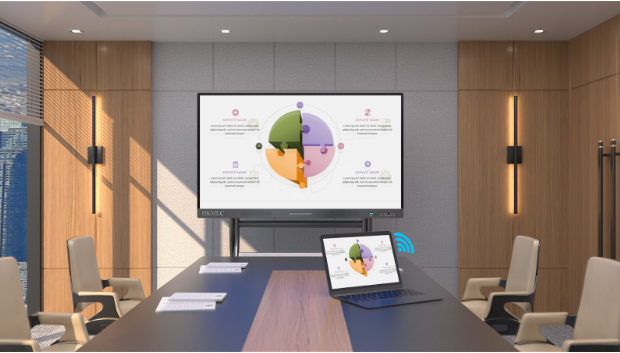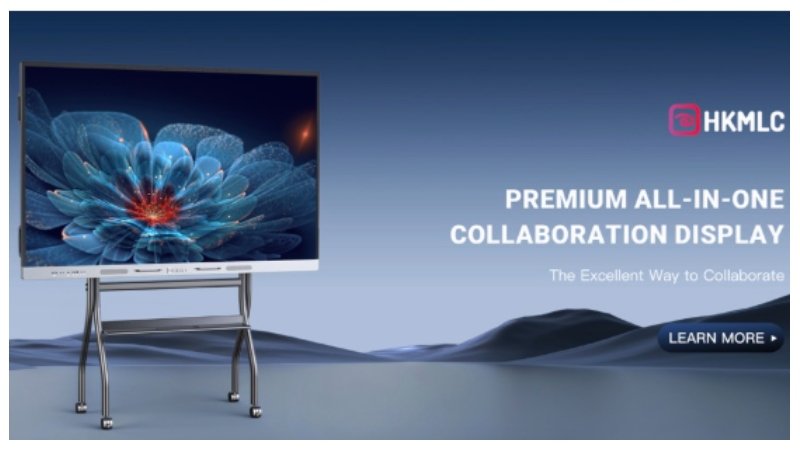Technology has transformed the way education is delivered in schools, colleges, and training centers around the world. Among the most significant changes is the adoption of digital classroom boards.
These boards replace traditional chalkboards and whiteboards with interactive screens that can display multimedia lessons, connect to the internet, and allow real-time collaboration.
Choosing the best model for a digital classroom board is a critical decision for educators and administrators because it directly affects teaching quality, student engagement, and overall learning outcomes.
What is a digital classroom board?
A digital classroom board, often called an interactive display or interactive whiteboard, is a large touch-sensitive screen used for teaching. It can connect to a computer or projector or operate as a standalone device. Teachers can display lesson content, write on the board using a digital pen or even their fingers, and integrate various learning tools such as videos, quizzes, and interactive simulations.
These boards are designed to make lessons more engaging, interactive, and adaptable for different learning styles. They can be particularly valuable in classrooms with diverse learners, as they allow educators to combine visuals, sound, and text in one platform.
Benefits of Using a Digital Classroom Board
Before looking at models, it is important to understand why these devices are becoming so popular in modern education.
Interactive Learning
Students can participate in lessons by answering questions directly on the board, moving objects in educational games, or brainstorming ideas in group sessions.
Access to Multimedia Content
Teachers can enrich lessons with videos, animations, and online resources that make concepts easier to understand.
Easy Lesson Preparation and Storage
Lesson plans, notes, and annotations can be saved digitally and reused, saving preparation time for teachers.
Encourages Collaboration
Students can work together on shared activities, improving communication and teamwork skills.
Adaptable for Different Subjects
Whether it is math, science, history, or art, the digital classroom board can be adapted for any subject through the use of specialized apps and tools.
Main Types of Digital Classroom Boards
There are several different types of digital boards available. Understanding their differences will help narrow down your choices.
Interactive Whiteboards with Projectors
These boards require a separate projector to display images. The surface of the board is touch sensitive, allowing users to interact with the displayed content.
Interactive Flat Panel Displays
These are large LED or LCD screens with built-in touch functionality. They do not require projectors, so the image is always bright and clear.
All-in-One Interactive Systems
These boards combine the display, computer, and software into a single device, making them easy to set up and move if needed.
Factors to Consider When Choosing a Model
When deciding on the best model for your classroom, several factors should guide your choice.
Screen Size
Larger screens are better for bigger classrooms, ensuring that students at the back can see clearly. Most models come in sizes ranging from 65 inches to over 86 inches.
Touch Technology
Some boards use infrared touch, while others use capacitive touch similar to smartphones. Capacitive touch tends to be more responsive and precise.
Resolution and Display Quality
A high-resolution display, preferably 4K, ensures sharp text and vibrant images, which are essential for visual learning.
Software Compatibility
The board should work well with educational software, online platforms, and your school’s existing systems.
Durability and Maintenance
Classrooms can be busy environments, so the board should be durable and easy to clean.
Connectivity Options
Multiple ports, such as HDMI, USB, and wireless connectivity options, allow for easy integration with other devices.
Price and Warranty
A good balance between cost and features is important. A reliable warranty and support service will protect your investment.
Popular Models and Their Strengths
While there are many brands offering digital classroom boards, a few have consistently performed well in educational settings.
- Promethean ActivPanel: Known for its high-resolution displays and strong educational software integration.
- SMART Board Series: One of the pioneers in interactive whiteboard technology, offering a wide range of sizes and features.
- ViewSonic ViewBoard: Offers good image quality, responsive touch, and competitive pricing.
- BenQ Interactive Flat Panels: Popular for their strong anti-glare screens and user-friendly design.
- HKMLC smart whiteboards: Known for combining advanced interactive technology with durability, making them ideal for active learning environments.

Matching the Model to Your Teaching Needs
No single model will be the best choice for every classroom. The ideal digital classroom board depends on your teaching style, your students’ needs, and your budget.
- For interactive group activities: Choose a model that supports multiple simultaneous touch points so that several students can work together at the same time.
- For multimedia lessons:Pick a model with excellent audio and video quality to make videos and interactive resources more engaging.
- For frequent online collaboration: Look for boards with strong internet connectivity and compatibility with cloud-based teaching platforms.
Training and Support
Even the best technology will not improve learning if it is not used effectively. When buying a digital classroom board, ensure that teachers receive proper training. This includes not just how to operate the board but how to integrate it into lesson plans.
Technical support is also crucial. Downtime during a lesson can disrupt learning, so having quick access to repair services or troubleshooting guides will keep your classroom running smoothly.
How Digital Classroom Boards Improve Student Engagement
Research has shown that students are more engaged when lessons are interactive and visually stimulating. Digital boards can turn a standard lecture into an immersive learning experience. By enabling students to actively participate, whether through answering questions, solving problems on the screen, or presenting their work these boards foster a sense of ownership over learning.
Additionally, they make it easier for teachers to differentiate instruction. Students who learn best through visuals can benefit from diagrams and videos, while those who prefer hands-on interaction can participate directly on the board.
The Role of Connectivity and Integration
In modern classrooms, a digital board should not operate in isolation. The ability to connect to student devices, learning management systems, and online resources extends its capabilities. This integration allows teachers to share assignments instantly, collect responses in real time, and even invite guest speakers to present remotely.
Models that integrate seamlessly with cloud platforms make lesson sharing and remote learning much easier. This feature became particularly valuable during periods of online or hybrid education.
Budgeting for a Digital Classroom Board
While high-end boards can be expensive, the cost should be weighed against the long-term benefits. A well-chosen model can serve a classroom for many years with minimal maintenance. Schools should also consider the cost of accessories such as digital pens, wall mounts, or stands, as well as any subscription fees for educational software.
Some manufacturers offer financing plans, allowing schools to spread out payments. This can make advanced models more accessible without putting too much strain on the budget.

Final Thoughts
Choosing the best model for a digital classroom board is an investment in the future of education. The right board will enhance teaching, make learning more interactive, and prepare students for the digital world. It should offer excellent display quality, responsive touch, strong connectivity, and compatibility with a wide range of educational tools.
By evaluating your specific classroom needs and exploring trusted models like HKMLC smart whiteboards, you can ensure that your choice supports both teachers and students effectively. The best model is not just about having the latest technology; it is about finding the right fit for your learning environment so that technology becomes a natural and valuable part of the educational experience.
See also read: Carl Higbie Current Wife: A Complete Guide

